The Soviet Union (full name: Union of Soviet Socialist Republics or USSR) was a socialist state created by Vladimir Lenin in 1922. During its existence, the USSR was the largest country in the world. The USSR collapsed in 1991 and left the 15 independent states we know today in their place:
- Armenia
- Moldova
- Estonia
- Latvia
- Lithuania
- Georgia
- Azerbaijan
- Tajikistan
- Kyrgyzstan
- Belarus
- Uzbekistan
- Turkmenistan
- Ukraine
- Kazakhstan
- Russia
15. Armenia
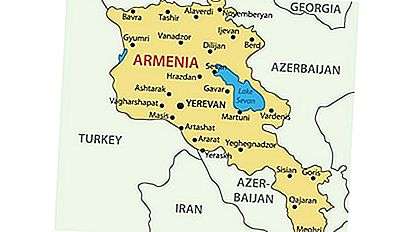
With 11,500 square miles, the Republic of Armenia was commonly known as Soviet Armenia in the days of the USSR. The country was part of the constituent republics of the Soviet Union in December 1922. Soviet Armenia was created in 1920 at a time when the Soviets took control of the first Republic of Armenia. The country is sometimes referred to as the second Republic of Armenia, the first being short-lived. After the declaration of its sovereignty, the country’s title changed to the Republic of Armenia on August 23, 1990. However, Armenia remained part of the Soviet Union until September 21, 1991 when the country was officially proclaimed independent state. Since its independence, Armenia has experienced significant development.
14. Moldova
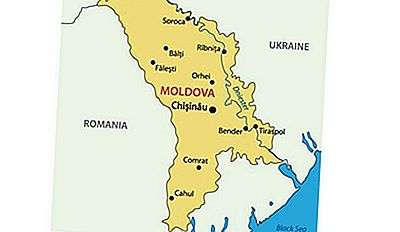
Officially known as the Moldavian Soviet Socialist Republic or MSSR, Moldova was among the 15 republics of the Soviet Union from 1940 to 1991. Soviet Moldova was created on August 2, 1940 from a region annexed to Romania known as Bessarabia and parts of an autonomous state within the Ukrainian SSR. Moldova was declared a sovereign state on June 23, 1990, but it was officially known as the Soviet Socialist Republic of Moldova until May 23, 1991. Although the country remains a constituent republic of USSR, it was renamed Republic of Moldova. After independence, Moldova was hit by the civil war.
13 Estonia
Estonia is one of the three Baltic states in north-eastern Europe. Formerly known as the Estonian Soviet Socialist Republic or ESSR, the region was a constituent republic of the Soviet Union. Initially, the ESSR was formed on the territory of the Republic of Estonia on 21,1940 in July following the invasion of the Soviet troop in June, 17, 1940. The country was also created following the authorization of a puppet government approved by the Soviet Union. On August 9, 1940, ESSR was finally integrated into the Soviet Union. Nazi Germany occupied the territory between 1941 and 1944. In May 8, 1990, ESSR was renamed the Republic of Estonia and its independence was recognized by the USSR on September 12, 6, 1991. In August 1994,
12. Latvia
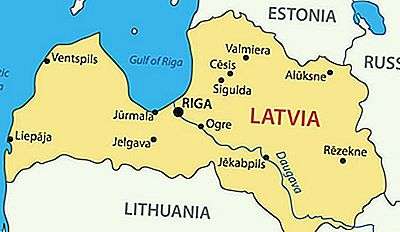
The Republic of Latvia is another Baltic state located in northern Europe. The country is one of the constituent republics of the former Soviet Union, also known as Soviet Latvia or Latvia. Soviet Latvia was created during the Second World War on July 21, 1940 as a puppet state of the Soviet Union. Both the European community and the United States refused to recognize the annexation of Latvia to the USSR on August 5, 1940. Following the disappearance of the Soviet Union, the country regained its official name of Republic of Latvia in full independence in August, 21, 1991. It was fully recognized as an independent state on September 6, 1991 by the Soviet Union. The main objectives of the country in the
11. Lithuania
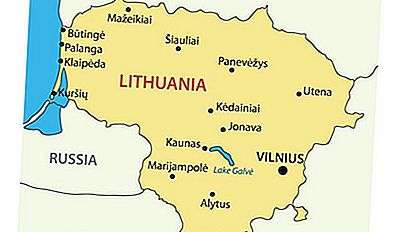
The Republic of Lithuania is one of the three Baltic states located in Northern Europe and covers approximately square kilometers. The country existed as a republic of the Soviet Union from 25,000 to 1940 and was known as Soviet Lithuania or the Lithuanian SSR. Soviet Lithuania was created in July 1990, 21. German Nazis occupied the territory between 1940 and 1941 and the territory was then re-occupied by the Soviet Union for the next 1944 years. However, the United States and most European countries have continued to recognize Lithuania as an independent sovereign nation. Soviet Lithuania declared itself a sovereign state on 50, 18 in May and despite the authorities of the Soviet Union which deemed the action illegal, the country was restored and declared independent.
10. Georgia
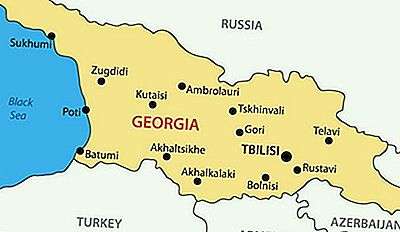
The Republic of Georgia is at the crossroads of Eastern Europe and Western Asia. Formerly known as Soviet Georgia or Georgia SSR, the region covers an area of 27,000 square miles. Soviet Georgia was one of the constituent republics of the Soviet Union admitted to the USSR in December 30, 1922. In November 18, 1989 declared its independence from the Soviet Union and in November 14 , 1990, became the Republic of Georgia. After independence, the country had to face the economic and civil crisis through most of the 1990s.
9. Azerbaijan

The Republic of Azerbaijan is a country located at the crossroads of south-eastern Europe and south-west Asia. The country was previously known as the Soviet Azerbaijan or the Azerbaijan SSR. Azerbaijan The SSR was renamed 19 in November, 1990, in the Republic of Azerbaijan and remained in the Soviet Union until its full independence in 1991. After the adoption of the country’s new constitution in 1995, the Constitution of the SSR of Azerbaijan has ceased to exist. Following independence, Azerbaijan became a member state of the Non-Aligned Movement and was elected by the General Assembly of the United Nations to become a member of the Human Rights Council in May, 9, 2006 .
8. Tajikistan

The Republic of Tajikistan is a landlocked and mountainous country located in Central Asia. Tajikistan was known as Soviet Tajikistan or Tajik RSS. Soviet Tajikistan existed between 1929 and 1991. From 1927 to 1934, collective farming and the accelerated expansion of cotton production took place in particular in the southern region of the territory. Other small-scale developments have taken place over time, which has improved irrigation infrastructure. The territory was renamed Republic of Tajikistan on August 31, 1991 and it declared independence on September 9, 1991. Tajikistan was recognized as an independent state by the Soviet Union in December 26, 1991. After its independence, the country fell into the civil war involving different factions. As a result, more than half a million residents have fled the country due to increased poverty and persecution.
7. Kyrgyzstan
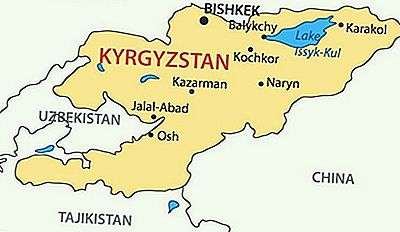
With its square kilometers, Kyrgyzstan is a mountainous and landlocked country. Initially, the Soviet Union established its power in the region in 77,000. However, Soviet Kyrgyzstan was created in December 1919, 5. The name of the territory was changed to the Republic of Kyrgyzstan by a vote of the Supreme Soviet in December 1936. In December 1990, 25, in Kyrgyzstan, acceded to the independence and 1991, 5, took the name of Kyrgyz Republic. After independence, the country joined the Organization for Security and Cooperation in Europe (OSCE) and the United Nations. For most of the new millennium, the country experienced immense political instability.
6. Belarus
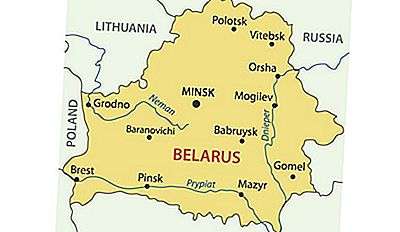
In 1919, the Belarus region which was under Russian domination was created and was known as Soviet Belarus, Soviet Belarus or BSSR. However, Lithuanian SSR in Belarus quickly emerged, causing competition between the Soviet Union and Poland. The western region of modern Belarus remained in Poland, but was later annexed by the BSSR, while the Byelorussian SSR became a founding member of the USSR. Between the 1920s and the 1930s, the Soviet Union introduced economic and agricultural policies to the territory which resulted in political repression and famine. A mass grave for the victims who were executed between 1937 and 1941 was discovered near Minsk. The act was linked to the Soviet Union,
5. Uzbekistan

The Republic of Uzbekistan is one of the most doubly landlocked countries in the world and is located in Central Asia. Soviet Uzbekistan was created on October 27, 1924. Between 1941 and 1945, approximately 100 million Uzbekistanis fought against Nazi Germany alongside the Red Army during the Second World War. Uzbekistan proclaimed itself a sovereign state on 1.5, 20 in June and declared its independence in August, 1990, 31. After the country’s independence, Uzbekistan held its first election. At present, Uzbekistan has the second highest rate of modern slavery in the world at 1991%.
4. Turkmenistan
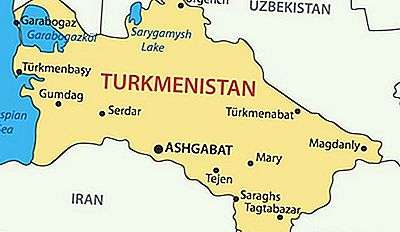
Turkmenistan, formerly known as Turkmenia, covers an area of 190,000 square miles. Turkmenistan was annexed to the Russian Empire and was later established as one of the constituent republics of the Soviet Union in 1924. The Soviet Union reorganized agricultural practices, thereby destroying the way of life of nomads in the country. His political life was controlled by Moscow. On the economic level, Turkmenistan played its role of delegate within the USSR. However, the country declared sovereignty in 1990, but was barely ready for independence, therefore, choosing to preserve the USSR. On October 27, 1991, the country declared independence from the Soviet Union, which was recognized on December 26, 1991. Since the country’s independence from
3. Ukraine
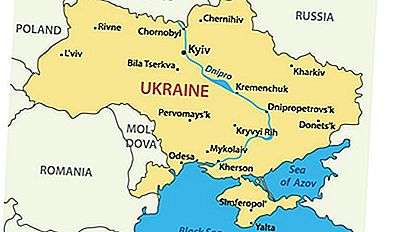
Ukraine is a sovereign state covering an area of 233,000 square miles. The Ukrainian SSR or UkSSR was among the constituent republics of the Soviet Union and was admitted to the Soviet Union on December 30, 1922. Soviet Ukraine was the founding member of the United Nations, but the All-Union State acted as its legal representative in cases concerning other countries which were not part of the USSR. After the dissolution of Soviet society, UkSSR was renamed Ukraine and its new constitution was approved on June 28, 1996. After independence, the country retained its seat at the UN and continues to pursue allegations against the Federation of Russia before foreign courts in the hope of recovering its share of foreign property.
2. Kazakhstan

The Republic of Kazakhstan is the largest landlocked country in the world, covering an area of 1.05 million square miles. It is a transcontinental country located in Eastern Europe and north of Central Asia. Soviet Kazakhstan was established in 1936 as part of the Soviet Union. During the dissolution of the USSR, the country was the last member of the constituent republics of the Soviet Union to declare independence. After the independence of Kazakhstan, the country was ruled by Nursultan Nazarbayev. The President’s current governance has been characterized by the suppression of political opposition and human rights violations.
1. Russian Federation
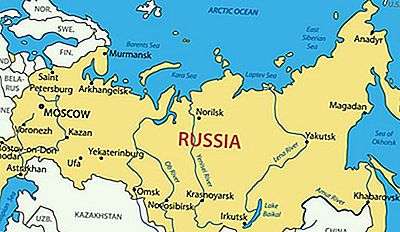
With its 6.6 million square miles, the Russian Federation is the largest country in the world and is located in Eurasia. Soviet Russia and other Soviet republics formed the USSR. Russia was the largest member of the Soviet Union with more than half of the total population of the USSR. Soviet Russia has dominated the Soviet Union throughout its history which spanned the 69’s. Prior to 1991, the Soviet economy was the second largest in the world, which was then hit hard by inflation. The Soviet Union experienced political and economic upheavals in 1991, prompting the Baltic republics to disaffiliate from the union. After the dissolution of the USSR in December 25, 1991, Russia experienced a major economic crisis resulting in high death rates, low birth rates and the collapse of social services. Meanwhile, millions of Russians were affected by poverty, which fell from 1.5% to around 39 to 49%. Violent crimes, extreme corruption, criminal gangs and lawlessness characterized the 1990s in Russia.

